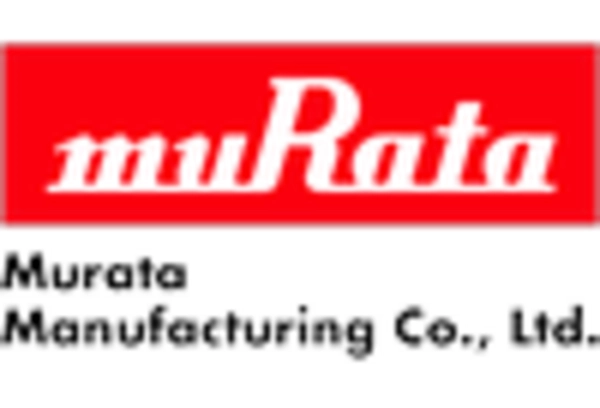Expansion of 5G Infrastructure
The rollout of 5G technology is significantly influencing the rf filters market. As telecommunications companies invest heavily in 5G infrastructure, the demand for specialized rf filters that can handle higher frequencies and wider bandwidths is expected to rise. By 2025, the 5G segment is anticipated to represent around 30% of the rf filters market. This expansion necessitates the development of filters that can effectively manage the increased data traffic and reduce latency. The rf filters market is thus witnessing a shift towards more sophisticated filtering solutions that can support the unique requirements of 5G networks, including enhanced performance and reliability.
Emergence of Smart Technologies
The rise of smart technologies, including smart cities and smart appliances, is a significant driver for the rf filters market. As these technologies proliferate, the demand for efficient rf filters that can manage the complex signals generated by interconnected devices is increasing. In 2025, the smart technology segment is projected to represent around 20% of the rf filters market. This growth is largely due to the need for reliable communication and data transfer in smart environments. The rf filters market is thus focusing on developing filters that can enhance the performance of smart devices, ensuring seamless connectivity and functionality in an increasingly digital world.
Growth in Automotive Electronics
The automotive sector's transition towards electrification and advanced driver-assistance systems (ADAS) is driving the rf filters market. As vehicles become more connected and reliant on electronic systems, the need for high-performance rf filters is becoming critical. In 2025, the automotive segment is projected to contribute approximately 15% to the rf filters market. This growth is fueled by the integration of features such as vehicle-to-everything (V2X) communication, which requires robust filtering to ensure reliable signal transmission. The rf filters market is adapting to these changes by developing filters that meet the stringent requirements of automotive applications, thereby enhancing vehicle safety and performance.
Rising Demand for Wireless Communication
The increasing reliance on wireless communication technologies is a primary driver for the rf filters market. As the demand for high-speed internet and mobile connectivity continues to grow, the need for efficient rf filters becomes more pronounced. In 2025, the wireless communication sector is projected to account for approximately 40% of the overall rf filters market. This surge is largely attributed to the proliferation of smartphones, IoT devices, and smart home technologies, all of which require advanced filtering solutions to minimize interference and enhance signal quality. Consequently, manufacturers are focusing on developing innovative rf filter designs that cater to these evolving communication needs, thereby propelling the growth of the rf filters market.
Increased Investment in Defense and Aerospace
The defense and aerospace sectors are experiencing heightened investment, which is positively impacting the rf filters market. As national security concerns grow, there is a push for advanced communication systems that require high-quality rf filters to operate effectively. By 2025, the defense segment is expected to account for about 10% of the rf filters market. This demand is driven by the need for secure and reliable communication channels in military applications, including radar and satellite systems. The rf filters market is responding by innovating and producing filters that can withstand harsh environments while maintaining optimal performance, thus supporting the defense and aerospace sectors.















Leave a Comment